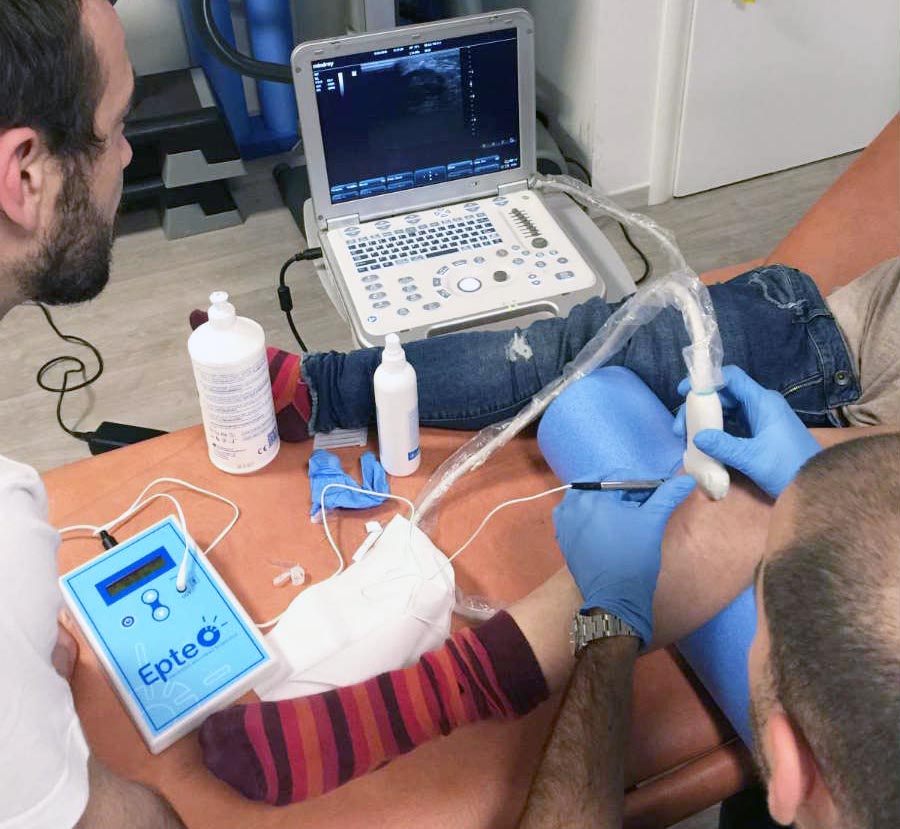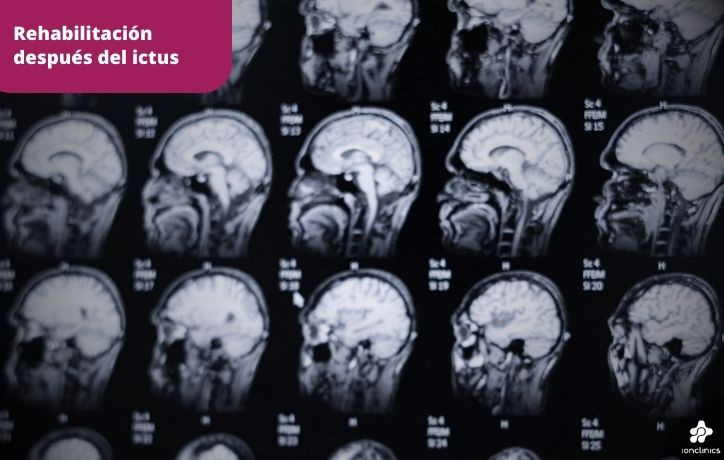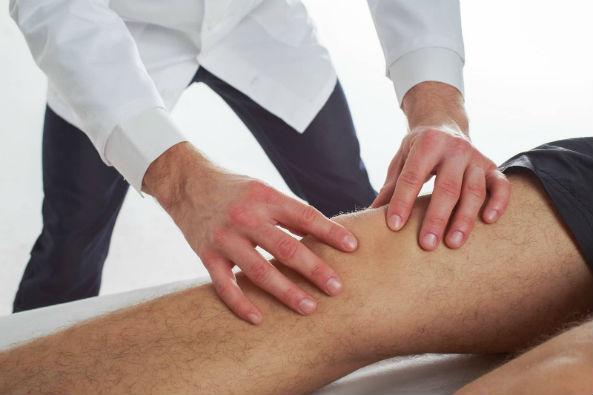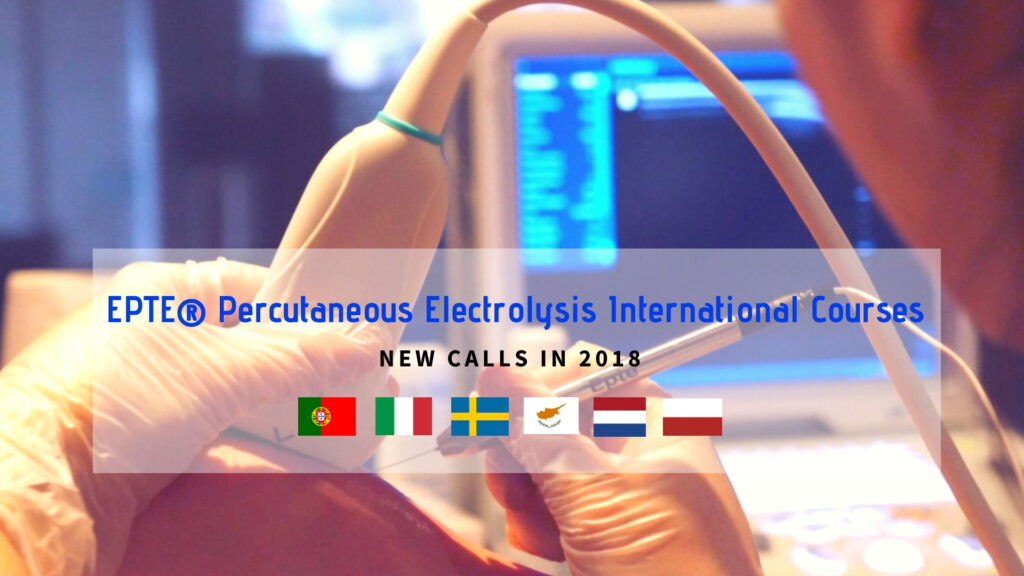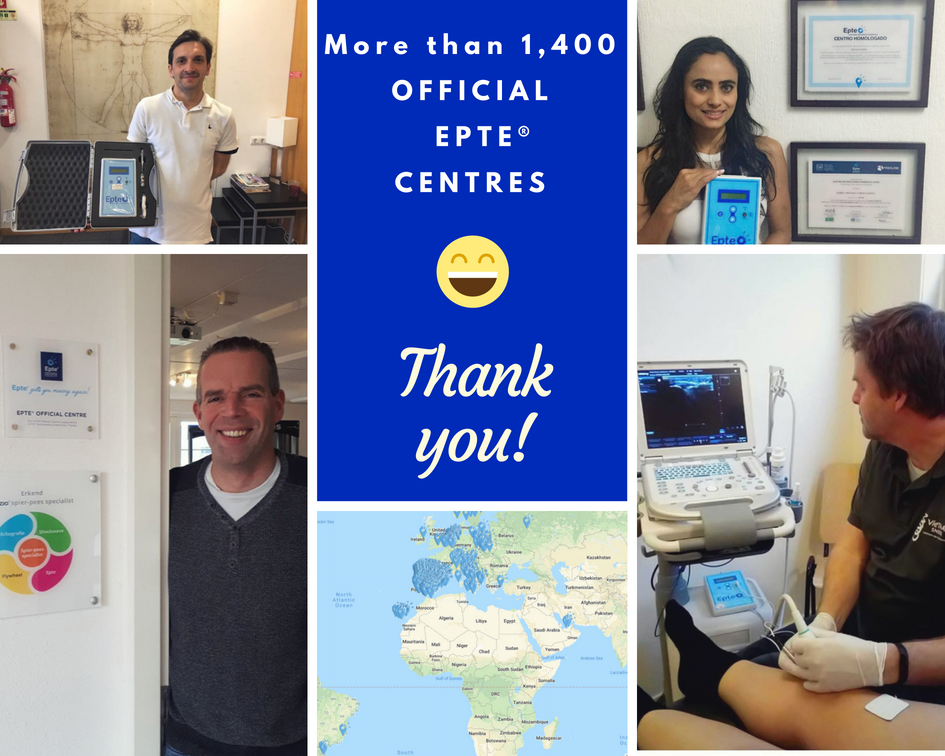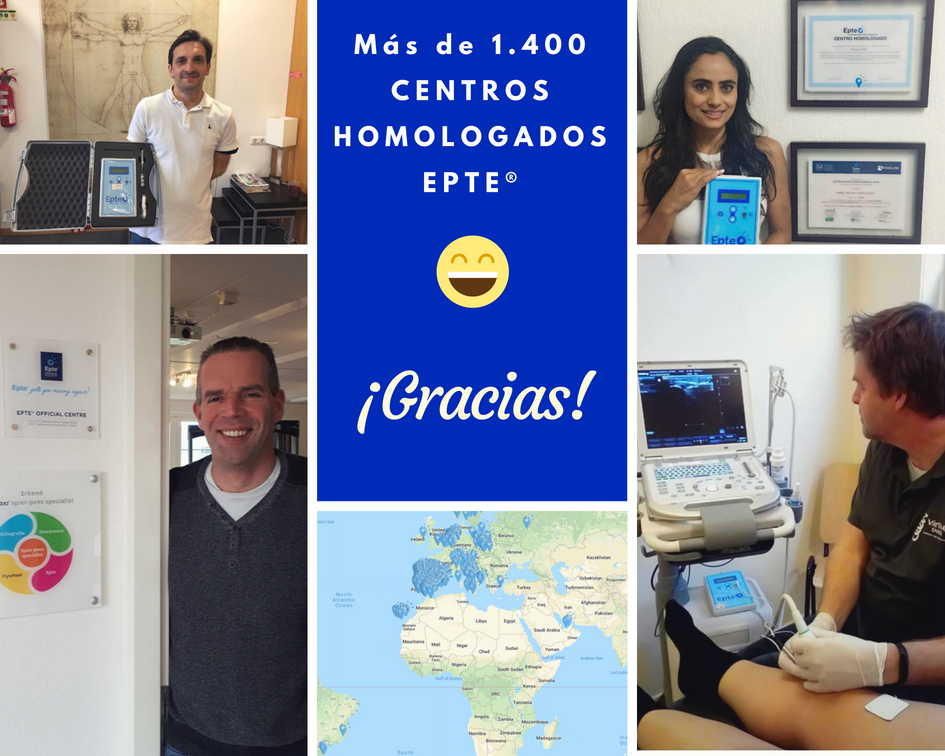Percutaneous Electrolysis is a non-invasive technique. It is the application of low voltage electrical current in order to cause the wanted biological response. Electrostimulation has been used for years to treat all kind of illnesses and diseases and to prevent and to improve the sporting performance. In the market, there are several low-frequency muscular electro stimulators with different characteristics, applications, and results. The difference with EPTE® is in the injury’s regenerative process. With EPTE® it is much more effective and faster. Furthermore, EPTE® is almost painless.
EPTE® devices of galvanic current are suitable for the treatment of tendinopathies in sporting people. Its objective is to cause electrochemical changes in the body, specifically, a controlled inflammatory response. Galvanic current is applied to the patient through acupuncture needles (it can be helped by the echography). It keeps a continued and uninterrupted current.
Electrolysis is the chemical alteration produced when current comes into contact with the degenerated tissue (lysis of the degenerated fibrous tissue). In this process, degenerated tissue is destroyed without affecting healthy tissue. Then, it will be an inflammatory response which should repair soft damaged tissue (tendon, ligament, muscle…). Application of Percutaneous Therapeutic Electrolysis is recommended for fast recovery of patients with different soft tissue pathologies, but focusing especially on tendinopathies, such as plantar fasciitis, pubis injuries, subacromial impingement, patellar tendinopathy, epicondylitis, Achilles Tendon tendinopathy, etc.
Today, Percutaneous Electrolysis Therapy is the most effective technique to recover chronical injuries in tendons both in sporting people and anyone with this type of injuries.
For further information, please contact us at contact@ionclinics.com

